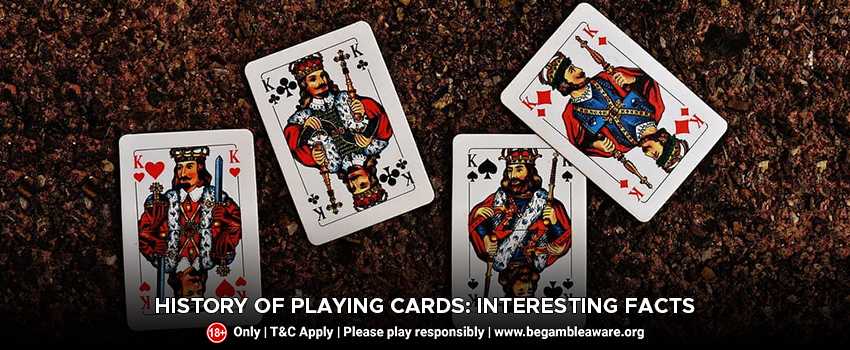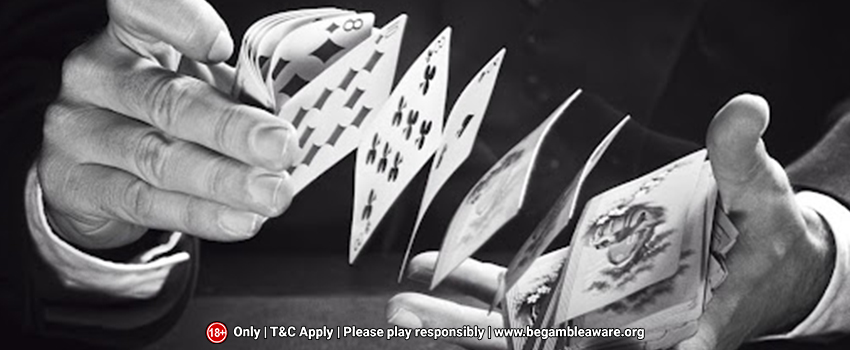
If you’re a master card player, or perhaps a casual one, an assortment of cards is undoubtedly the essential tool in your trade. However, how often do you consider the cards and not the game?
We look more closely at the things they represent and where they came from, and the reason they’re how they are. Continue reading to discover some interesting facts regarding the history of playing cards.
No One Knows When Playing Cards Were Invented
You may have read that the first known poker game was played in China in the nine century. Chinese historians have referred to the game as a “game of leaves” played at the beginning of the Tang Dynasty. For many years, scholars have thought that this was a primitive version of playing cards.
The experts aren’t certain. Recent academic discussions on the game suggest there was likely something else going on. If the traditional version of this game that is not widely played is not correct, the first reference to playing cards can be located in the 1200s..
In either case, the history of playing cards can be traced back to China. The Chinese are acknowledged as the inventors of games made of paper, which is another Chinese invention that was developed during the century (2nd century).
Some historians believe that the first known use of paper for a game was a variant of dominoes. Every possible combination of a pair of six-sided dice is illustrated on the paper.
According to the Playing Card Divination for beginners, The book describes Fortune Telling with ordinary cards. Written by Richard Webster, two 19th century academics and travelers (Sir William Wilkinson and Dr. Stewart Cullin) proposed that playing cards came from Korea as a type of divination.
Webster uses The History of Playing Cards by Roger Tilley as a source. Tilley claims that there isn’t enough evidence to prove that Europeans learned about cards through the east. It was in 1816 that Samuel Weller Singer published Studies into the history of playing cards, a collection of documents composed by prominent gentlemen.
The introduction chapter claims that German cities first made mention of games of cards in their municipal ordinances around 1300. The first French mention of card games originates from a 1341 document called “Renard le Contrefait.”
Some scholars believe that playing cards traveled through India as well as Persia before arriving in Europe. Tilley believes that Europeans may have created a history of playing cards of their own. The history of the world is full of precedents of inventions that were made all over the world independently, So Tilley’s theory could be true.

Playing cards and Tarot Cards may have had an Common Origin
Tarot cards are utilized to the divine and are authenticated in Europe around at the time of Mamluk play cards. Tarot and card game historians agree Europeans used the divination card following the Crusades.
There are mentions in Islamic texts of the cards being used to the divine. Martiano da Tortona wrote about the use of tarot cards to play games before 1425. The games were called “tarot,” “tarock,” “tarocco,” and other spellings throughout the years.
The earliest tarot-based games could have introduced the concept of trumping to the modern game of history of playing cards. The first known reference to trump cards is found in texts that describe the games of the tarot.
Poker May Be Older Than Most People Believe
The Wikipedia History of Poker article states that the game was created during the late 19 century in the United States, while Pai Gow Poker (based on the classic Chinese Pai Gow game) has been played for more than 1000 years.
Numerous other sources about historical aspects of the game suggest that it is likely derived from the French game known as”p one” which was introduced to America in the early part of the 1890s.
Also, poque is believed to have come from the “Spanish” game called primo. Like we said earlier, poker is thought to have evolved in the context of brag, also commonly referred to as the bluff.
Samuel Weller Singer’s Researches book discusses how to play the game of primero but doesn’t include poque. Primero has been played across England from the time of the Queen Mary and is believed to have come by in the Spanish court.
Singer’s book states that nobody knows the place where the game was born, but card game historians of the time believed they were or were Spain or Italy. The game has spawned numerous variations, but the fundamental rules shared by the game of poker were established long before the English started colonizing North America.
One of the first descriptions of poker with this name was in an 1843 publication called An Examination of the Art and Miseries of Gambling by J.H. Green. Green describes the way it was played on riverboats by gangs of card players who concocted rich businessmen by playing a game that was rigged. The game Green described was played using 20 cards.
Green regrets that there was no edition of Hoyle’s Game before 1843 that has ever mentioned poker. The game was introduced in the edition of 1845. It was published in 1845. Hoyle’s game descriptions are far closer to the contemporary five-card game than the one Green described in the 1845 edition.
The Egyptian Mamluks Probably Invented Modern 4-Suit Decks
The Mamluks were non-Muslim slaves employed to serve as troops under Muslim rulers. The first Mamluks included those of the Ghaznavids from Greater Khorasan. Khorasan was an empire located in central Asia during the ten century.
Westerners most popularly recognize Mamluks as slave soldiers used in the middle ages of Egypt, which is where they later created their Sultanate around 1250. A near-perfect deck made of Mamluk playing cards dating to the early 1400s was discovered in 1939.
A paper published in 1971 claimed that they were the first known form of a deck that European game historians used. The Mamluk cards were called Muluk Wa-Nawwab. They could have been used in the game known as Nayb.
Charles VI of France (ruled from 1380 until 1422) purchased three decks of hand-painted cards thought to belong to Mamluk cards in 1392. Charles Poupart, the Royal Treasurer, reported the year 1392 as the sum of 56 Sols Parisis was given to Jacquemin Grigonneur in exchange for three decks.
These hand-painted decks were not common in the past as well as they were not commonplace. Chronicles of Viterbo claims that the game of Nayb came to Italy “by a Saracen” in 1379. But, regulations restricting or prohibiting the playing of cards were enacted in cities throughout France, Italy, and Switzerland in 1377.
Conclusion
The history of gambling is an interesting subject. It has had an impact on everything from kings and fiction politics to religion. There’s hardly a single aspect of life in the west that hasn’t been affected by or influenced by the game of cards.
A number of the most well-known crimes of modern times were attributed to games of cards. In the same way, game-playing was a factor in the colonization of the New World along with gunpowder and industrialization.
It isn’t easy to envision a future that isn’t full of card games. People have used them to pass the time during long journeys and cold winter nights since they were transported throughout Asia across Asia Europe.